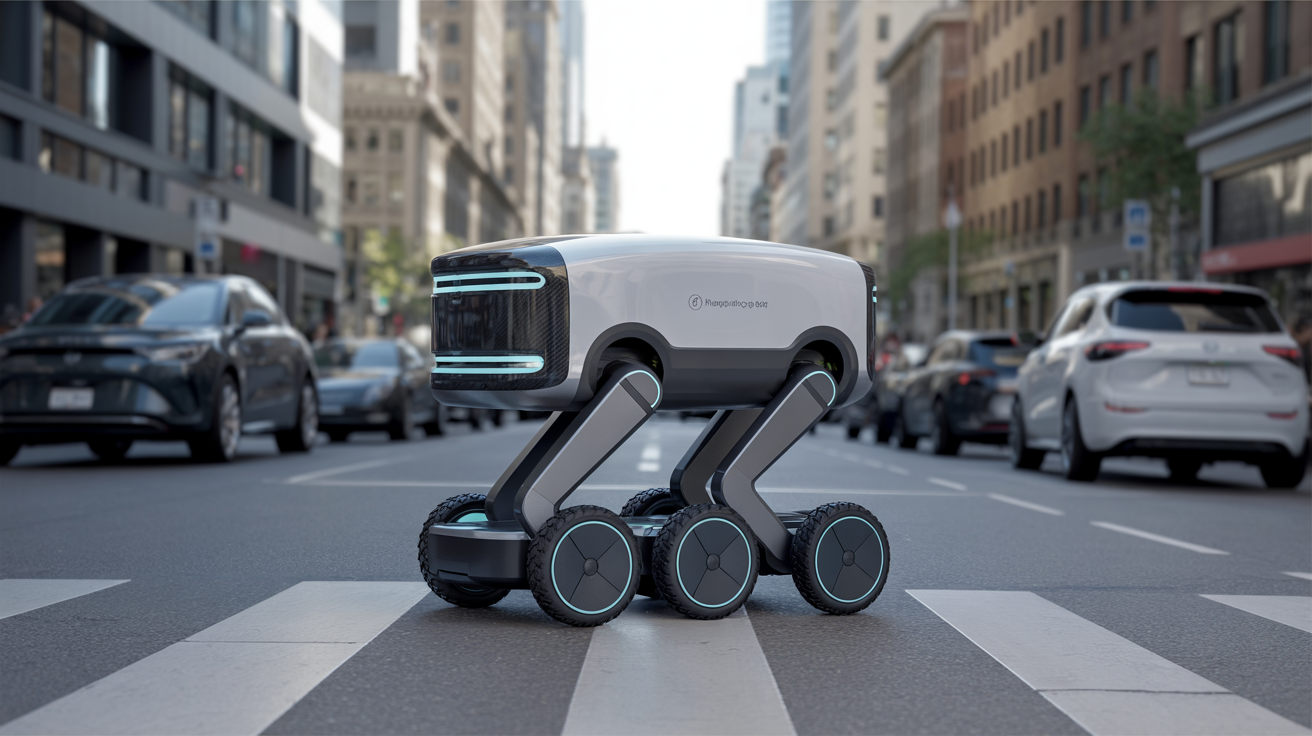By Futurist Thomas Frey
In 2020, the “last mile problem” was one of logistics’ greatest headaches—the expensive, inefficient final leg of delivery that got products from the warehouse to the customer’s door. Two decades later, that problem has vanished, replaced by something far more transformative: the “last minute” opportunity. By 2040, ground-based delivery drones—autonomous, adaptive, and nearly omnipresent—have turned the act of waiting into an anachronism. If you live in a city, you don’t wonder if something can be delivered—you wonder how fast it can materialize.
The key innovation wasn’t faster drones, but smarter infrastructure. Once drones learned to climb steps, open doors, and navigate complex terrain, the entire concept of “delivery zones” dissolved.
Suddenly, 78% of urban deliveries arrived within fifteen minutes of ordering. It wasn’t because warehouses got closer—it was because micro-fulfillment centers became viable everywhere. Any underused basement, parking garage, or backroom could become a node in an instant supply chain, replenished by autonomous trucks and ground drones that never sleep.
The urban landscape changed accordingly. Every apartment building lobby became a miniature logistics hub, equipped with automated lockers, smart-charging stations, and robot corridors for incoming and outgoing deliveries. Pharmacies turned 24/7 without a single human staff member. Grocery stores became drone dispatch points, where algorithms optimized routes not just by geography, but by real-time neighborhood demand. The invisible ballet of drones reshaped city life—quiet, constant, frictionless.
The provocative shift wasn’t technological—it was cultural. “Going to the store” became what horseback riding became after the car: something people still did, but for enjoyment, not necessity. Shopping in person became a leisure experience—a way to socialize, discover, and engage the senses. Retail didn’t die; it evolved. The stockroom disappeared, replaced by atmosphere. A shoe boutique became a café-meets-gallery where you tried on prototypes, discussed materials with stylists, and tapped “send it home via drone.” The package often arrived before you did.
The labor market changed, too. Stock clerks became experience curators. Delivery drivers transitioned into fleet managers, overseeing networks of semi-autonomous drones. By 2040, more people were employed in local logistics management—maintaining, programming, and optimizing small-scale fulfillment systems—than traditional retail clerks had ever been. The drone economy didn’t eliminate work; it redistributed it into higher-skill, higher-autonomy roles.
Economically, the “last-minute” era redefined convenience as a competitive advantage. Restaurants and small businesses thrived on hyper-local fulfillment, serving customers within a five-mile radius through drone networks. Subscription services emerged for everything from groceries to clothing to medicine, where predictive AI anticipated needs before customers even placed orders. Your home wasn’t just connected—it was supplied, automatically.
But this abundance came with new challenges. When goods could arrive almost instantly, consumption patterns changed. The average urban household in 2040 received 46 drone deliveries per week, up from 4.7 in 2020. Cities responded by regulating air and ground drone lanes, creating “silent hours,” and embedding delivery infrastructure into zoning codes. What began as a logistical optimization became a new form of civic planning—urban design as supply chain architecture.
The social effects ran even deeper. The friction of scarcity—the small inconveniences that once structured daily life—disappeared. People didn’t “run errands” anymore; their drones did. Groceries, prescriptions, and household items arrived without thought. Human routines shifted toward experiences that couldn’t be delivered—conversation, craftsmanship, community events. The paradox of the “last-minute world” was that as goods became more instantaneous, time itself became more human.
Final Thoughts
The “last mile” once represented the most difficult part of logistics. In hindsight, it represented the most limited part of imagination. Ground-based drones turned what was a cost problem into a cultural revolution—an invisible nervous system connecting every human settlement to its own autonomous supply web. By 2040, “delivery” doesn’t mean moving objects from one place to another. It means redistributing time, giving people back the minutes they once spent waiting, driving, or searching. And in that sense, the last-minute economy isn’t just efficient—it’s liberating.
Original Article: The “Last Mile” Problem Becomes the “Last Minute” Opportunity
Related Reading:
- Drone Mailboxes: The Future of Automated Deliveries
- The Silent City: How Autonomous Logistics Will Reshape Urban Life


